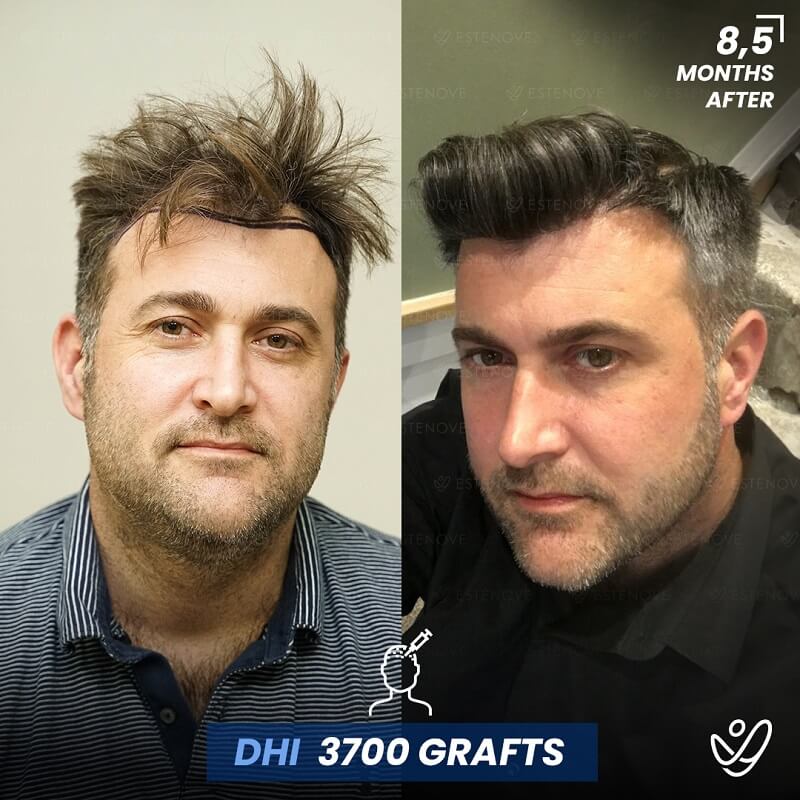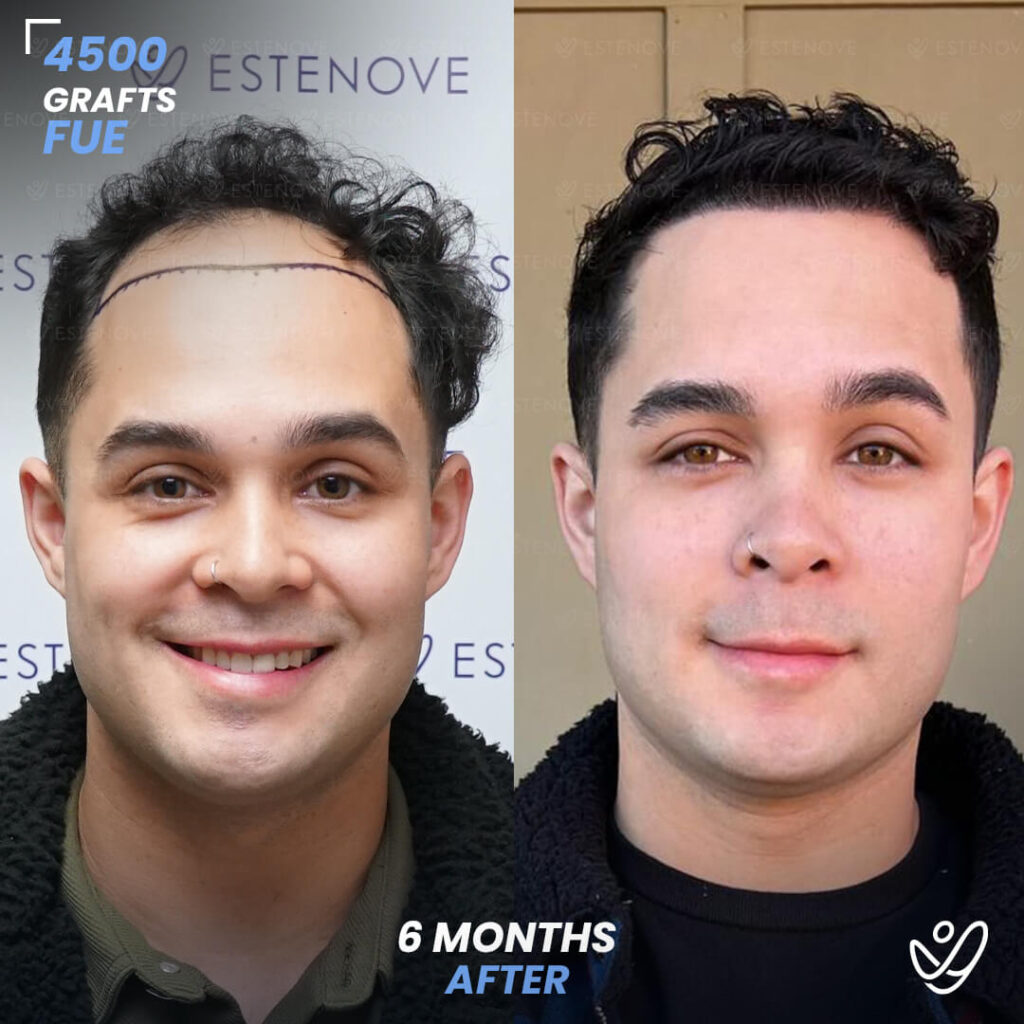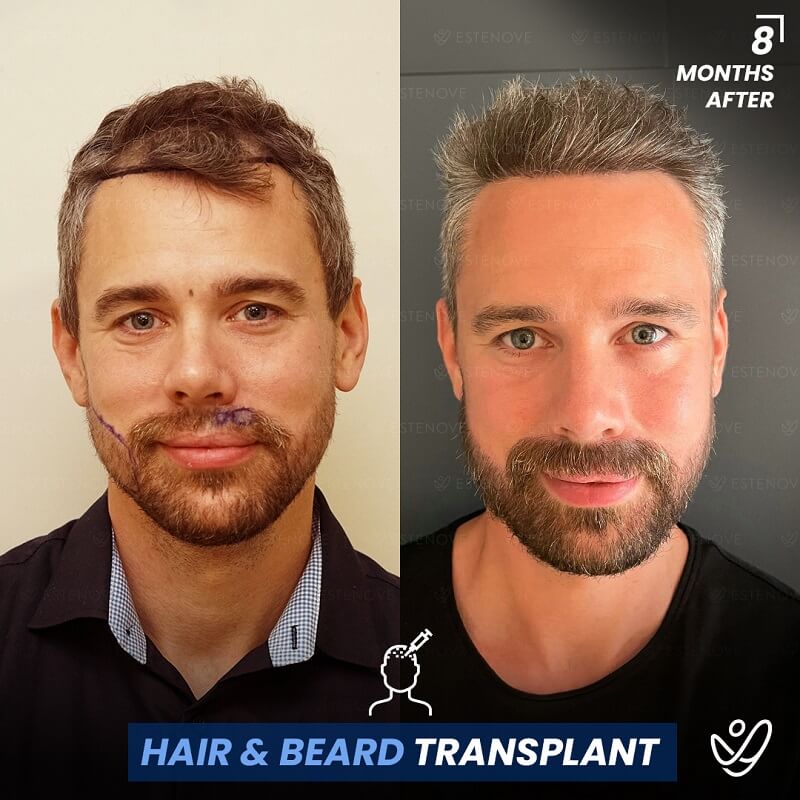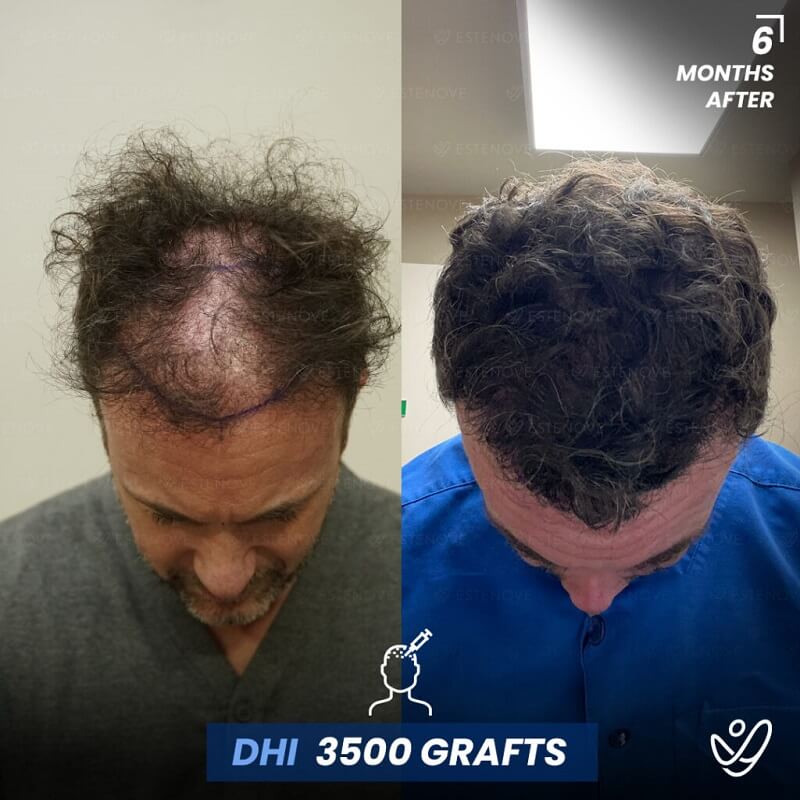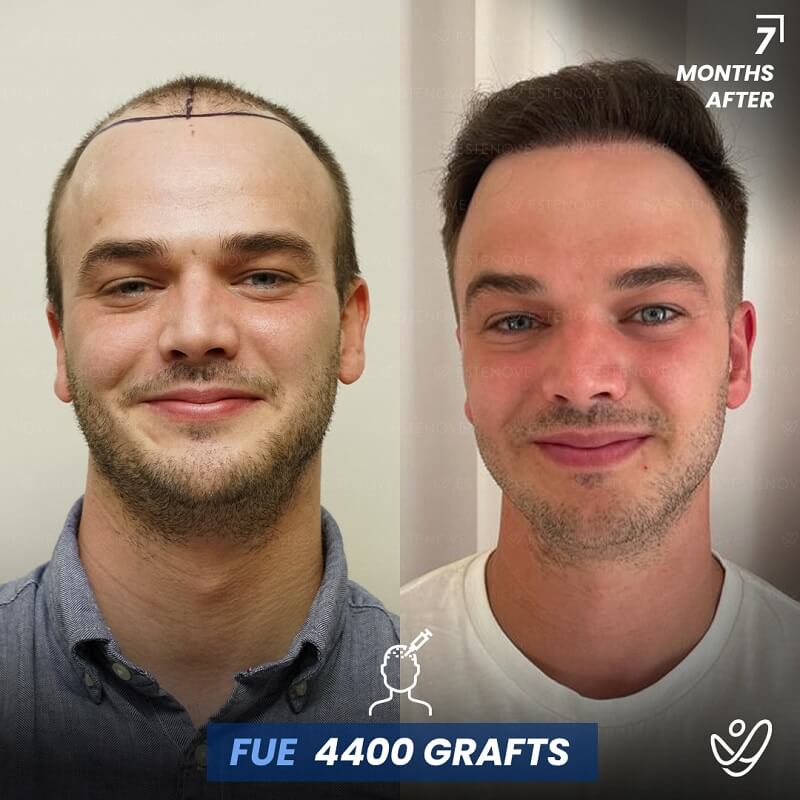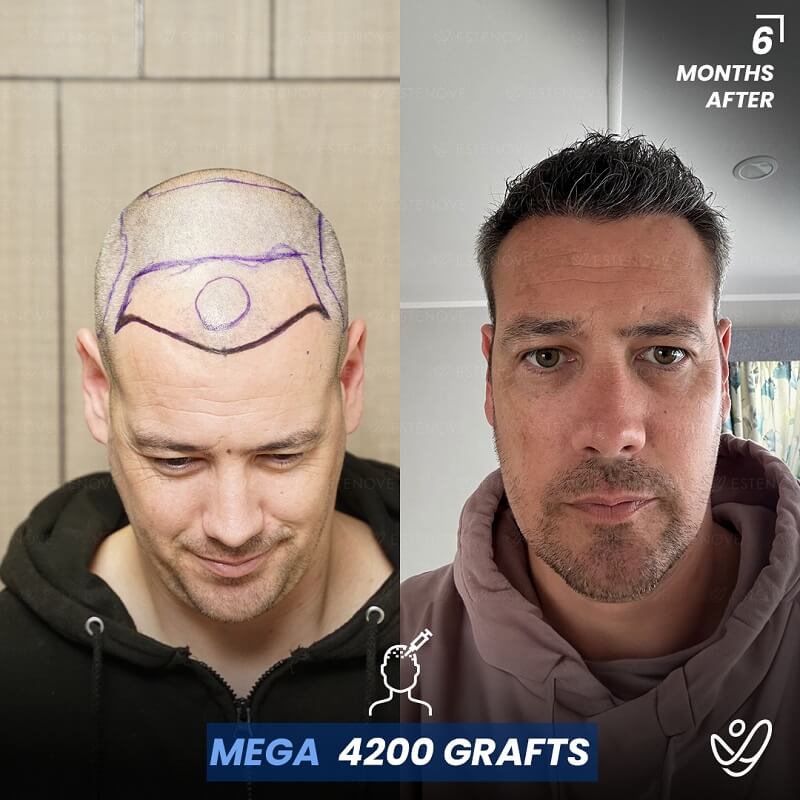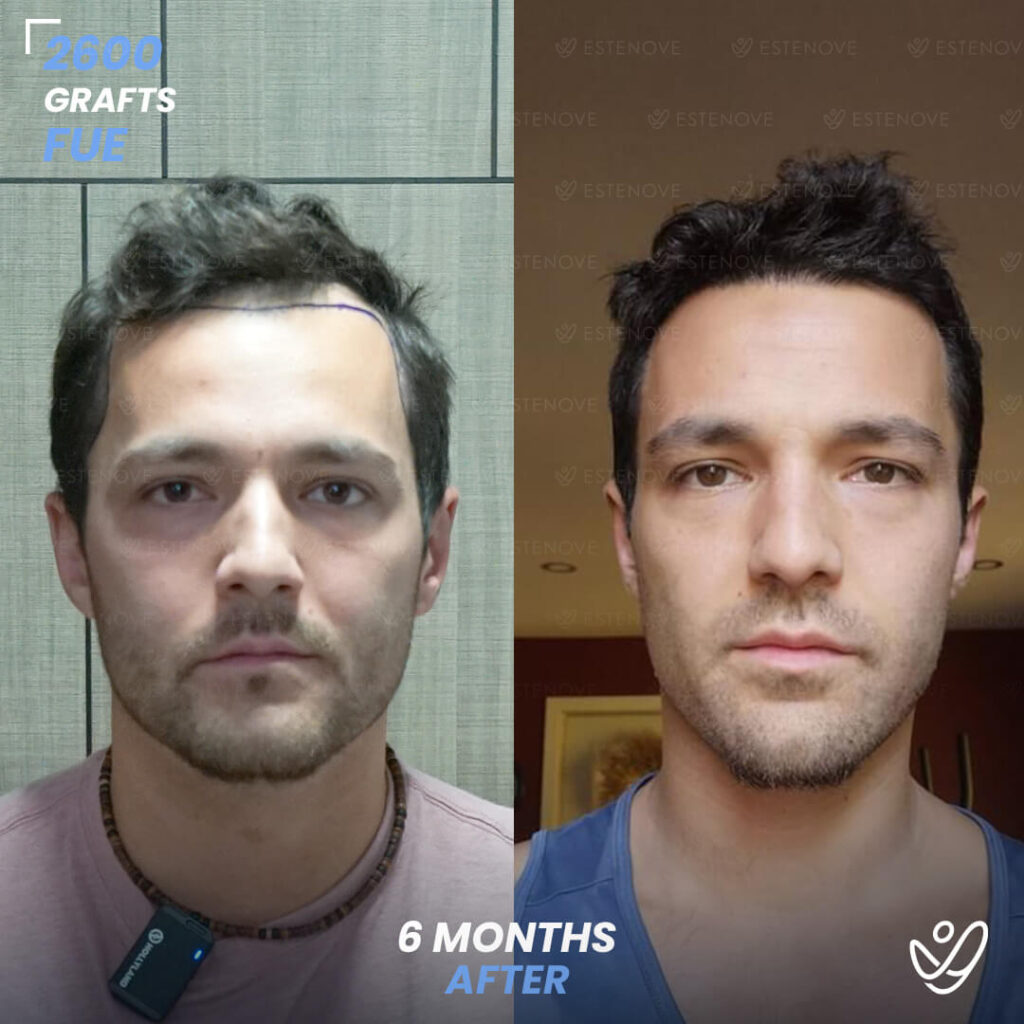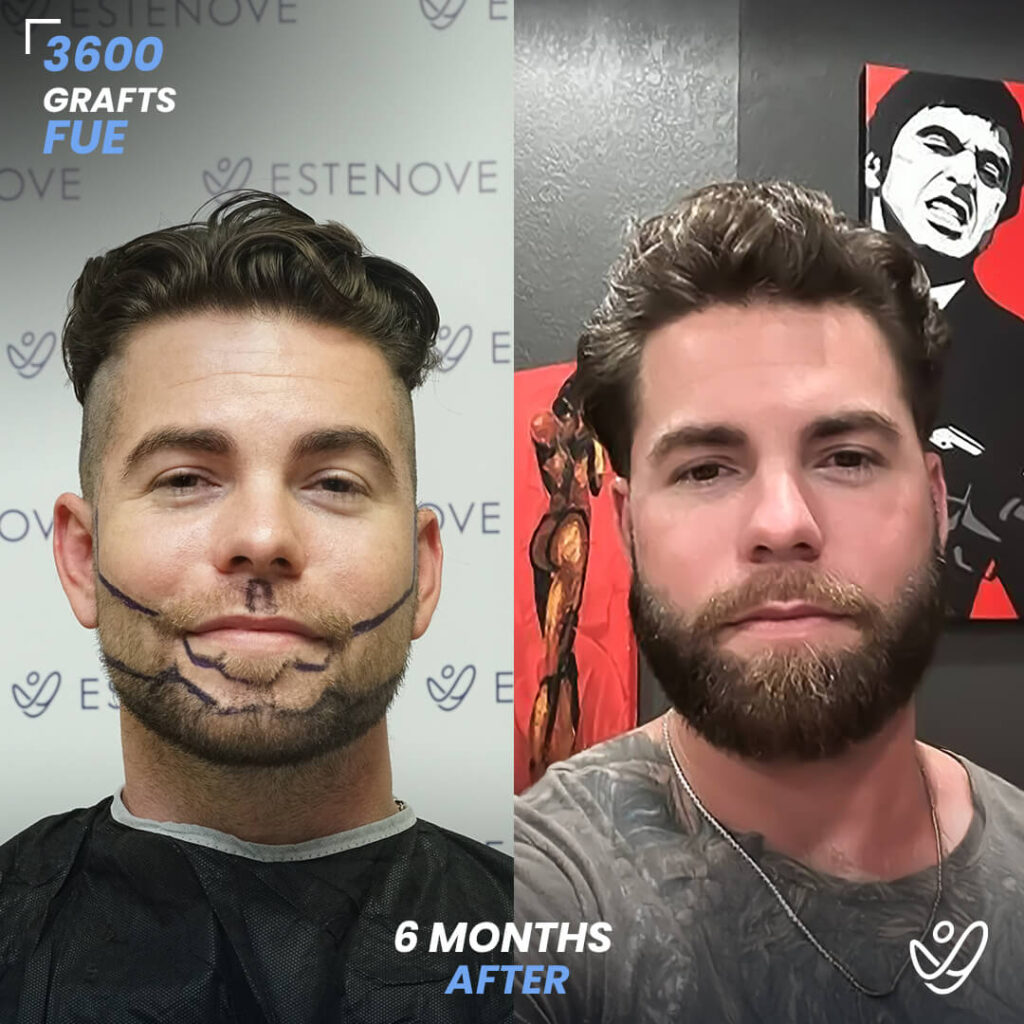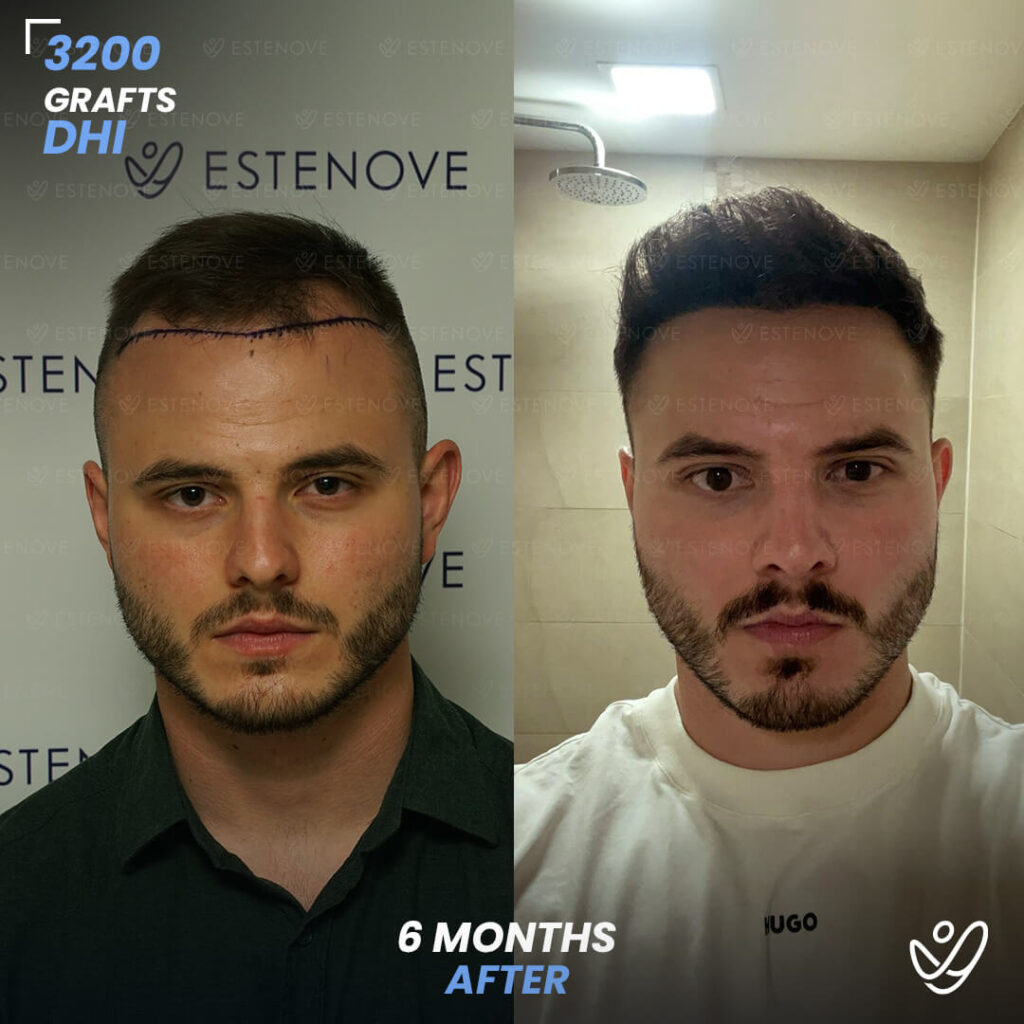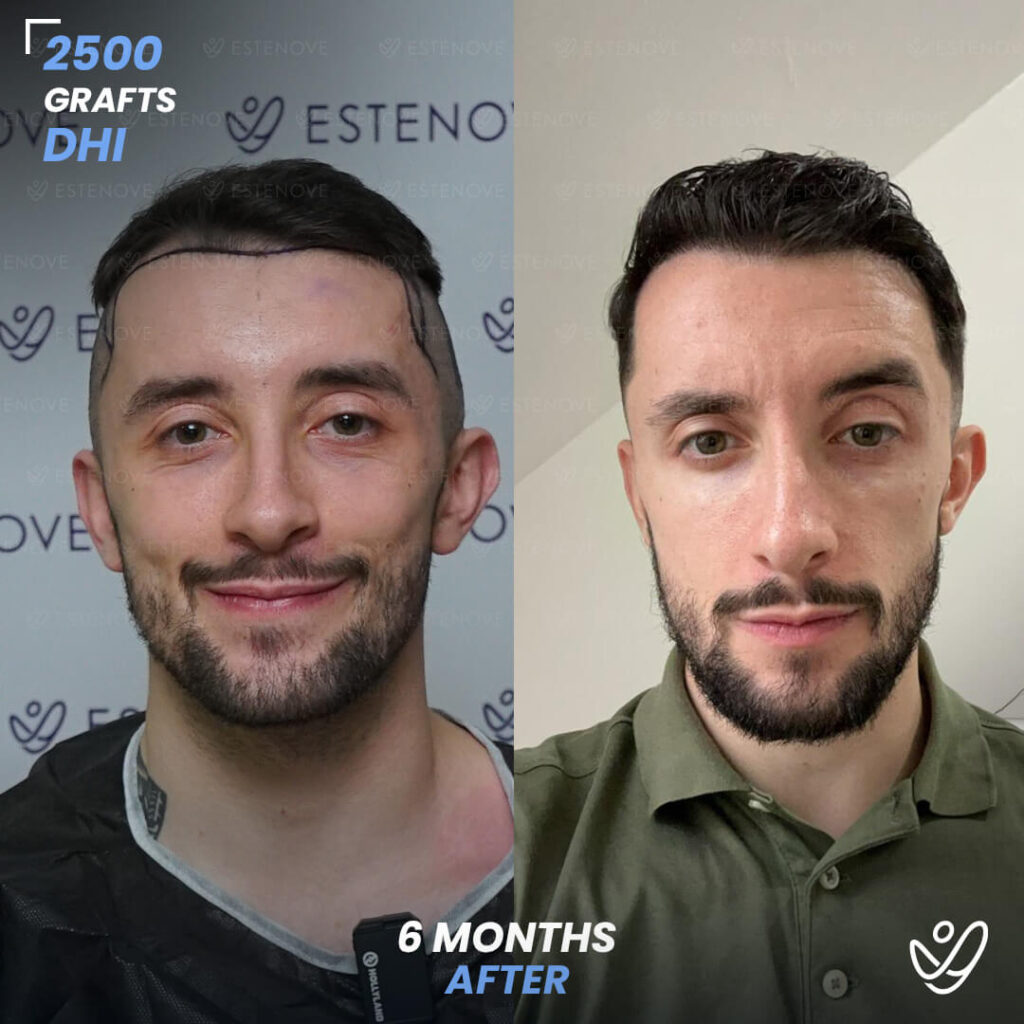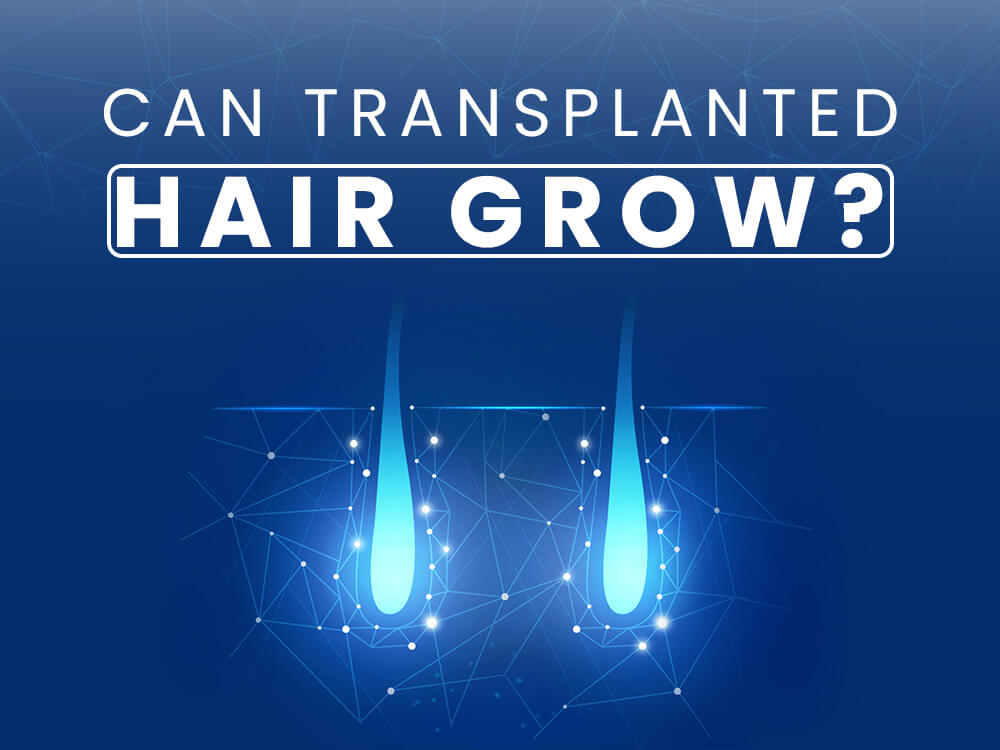
Yes, transplanted hair can grow and typically does! In hair transplant procedures like FUE (Follicular Unit Extraction) and DHI (Direct Hair Implantation), hair follicles are taken from a donor area (often the back or sides of the head) and implanted into areas experiencing hair loss. These transplanted follicles take root and start growing new hair over a few months.
After the procedure, patients should follow detailed aftercare instructions, such as avoiding strenuous activities, keeping the scalp clean, and using recommended shampoos and medications. New growth from the transplanted follicles often begins within three to four months, although a temporary shedding phase, known as “shock loss” may occur first. By six months, most patients see significant improvements, and full results can take up to 12–18 months, depending on individual factors such as genetics and post-surgical care.
Factors Influencing Hair Growth After Transplant
Numerous factors can affect the success of hair growth following a transplant. Understanding these elements can help set realistic expectations. First, the quality of the donor hair is significant; healthy hair follicles tend to yield better results. Secondly, the skill and experience of the surgeon play a critical role in determining how well the follicles are harvested and implanted.
Other influencing factors include the patient’s age, overall health, and adherence to post-surgical care guidelines. Additionally, the type of hair loss and its underlying causes can also affect outcomes. For instance, genetic conditions like androgenetic alopecia might require a different approach than hair loss due to stress or medication.
Moreover, the patient’s lifestyle choices can significantly impact the healing process and the eventual success of hair growth. Factors such as diet, exercise, and smoking can influence blood circulation and nutrient delivery to the hair follicles. A balanced diet rich in vitamins and minerals, particularly those known to support hair health like biotin, zinc, and omega-3 fatty acids, can enhance the body’s ability to foster new hair growth. Regular exercise can improve overall blood flow, which is essential for delivering nutrients to the scalp and promoting a healthy environment for hair follicles.
Another crucial aspect to consider is the psychological state of the patient. Stress and anxiety can hinder the body’s healing processes and may even contribute to further hair loss. Engaging in stress-reducing activities, such as yoga, meditation, or counseling, can be beneficial not only for mental well-being but also for the physical recovery process. Additionally, following a prescribed regimen of post-operative care, which may include specific shampoos, topical treatments, and avoiding certain activities, can further enhance the likelihood of successful hair growth after a transplant.
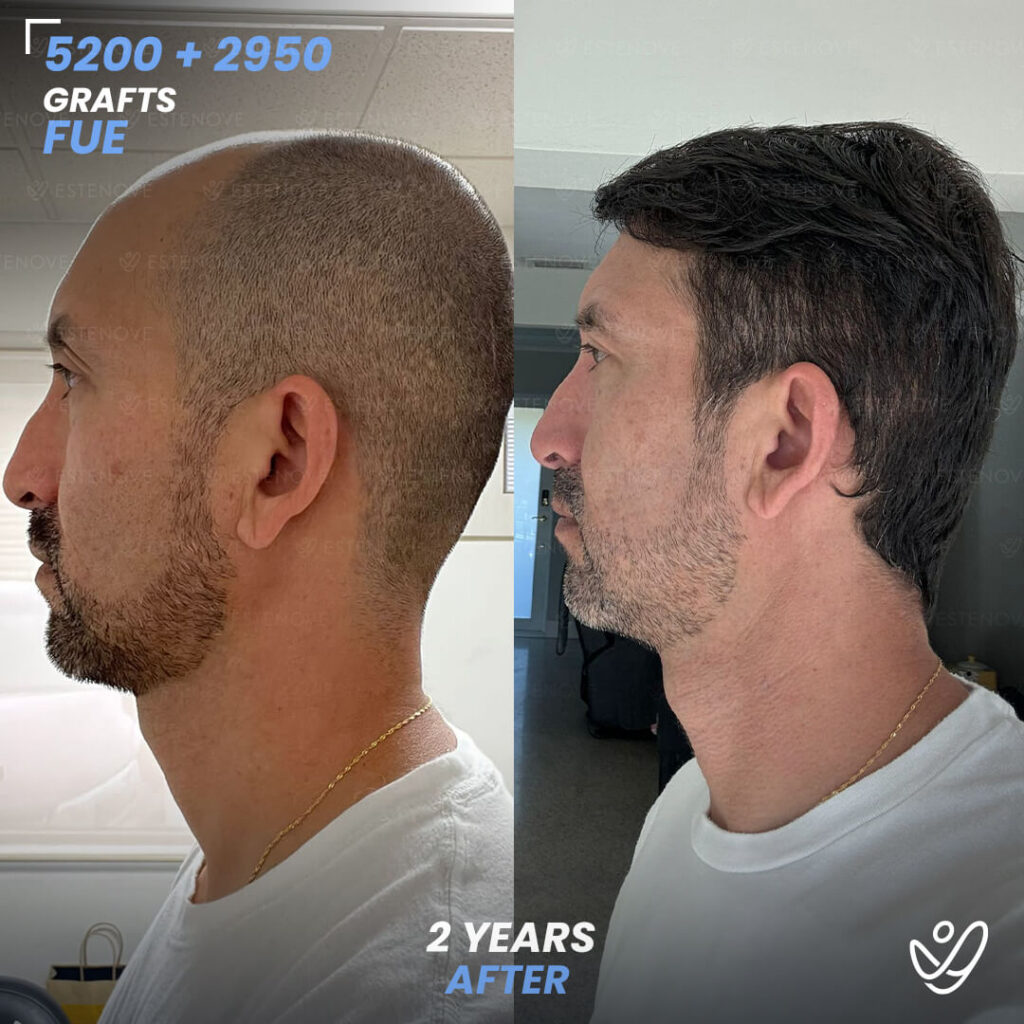
5200 + 2950 grafts FUE hair transplant before & after
The Science Behind Hair Follicle Survival
Following a hair transplant, the survival of the transplanted follicles is paramount. The process of implantation subjects them to stress, and they may go through a phase known as “shock loss” where they temporarily fall out before re-growing. A well-performed transplant minimizes this shock and encourages quicker survival and regrowth of the follicles.
Research has shown that factors such as oxygen supply, moisture, and the health of surrounding tissue can enhance follicle survival. Surgeons often use advanced techniques to ensure that these variables are optimized, leading to a higher success rate for hair growth in the transplanted areas.
Moreover, the timing of the transplant plays a crucial role in follicle survival. Transplants performed during the cooler months may experience less stress due to lower temperatures and humidity levels, which can help maintain the integrity of the follicles. Additionally, the patient’s overall health and lifestyle choices, such as nutrition and hydration, significantly impact the healing process and the eventual success of the transplant. A diet rich in vitamins and minerals, particularly those that promote hair health like biotin and zinc, can bolster the body’s ability to support new hair growth.
Another important aspect is the technique used during the transplant. Follicular Unit Extraction (FUE) and Direct Hair Implantation (DHI), are two common methods, each with its own advantages. Understanding the nuances of these methods allows patients to make informed decisions about their hair restoration journey, ensuring that they choose the option that best suits their individual needs and goals.
Common Myths About Transplanted Hair Growth
Despite the growing acceptance of hair transplantation, several myths still surround the topic. One common misconception is that transplanted hair will maintain the same characteristics as natural hair. While it may grow and feel like natural hair, it may lack certain traits if the original hair was different in texture or color. For instance, if the donor hair comes from a different area of the scalp or even from a different individual, the texture, thickness, and color may not perfectly match the recipient’s existing hair. This can lead to a noticeable contrast, especially in cases where the hair is styled or cut in a way that highlights these differences.
Another myth is that hair transplants are an instant solution to hair loss. In reality, it may take several months for newly transplanted hair to grow as expected. Patients often experience a shedding phase shortly after the procedure, which can be disheartening. However, this is a normal part of the hair growth cycle, and understanding this process is crucial for managing expectations. Typically, the hair begins to regrow within three to six months, and full results may not be visible for up to a year. This timeline can vary significantly based on individual healing processes, the technique used, and the overall health of the patient.
Furthermore, many people believe that hair transplants are only suitable for older individuals experiencing male or female pattern baldness. However, hair loss can affect individuals of various ages and backgrounds, and advancements in hair restoration techniques have made it accessible to a broader demographic. Young adults facing early hair loss can benefit from these procedures, as early intervention may help them achieve a more natural look and prevent further loss in the future. It’s essential for potential candidates to consult with a qualified specialist to determine the best course of action tailored to their specific needs and hair loss patterns.
Post-Transplant Care: Essential Tips for Success
After undergoing a hair transplant, patients are often provided with a care regimen essential for recovery and optimal results. Following these guidelines can significantly influence the success of hair growth. It is crucial to avoid strenuous activities and direct sun exposure for at least a week following the procedure.
Patients are also advised to use a gentle shampoo and avoid scratching the scalp. Keeping the scalp clean and moisturized helps promote healing and creates a favorable environment for new hair growth. Additionally, adhering to any prescribed medications can help manage discomfort and support the healing process.
Timeline: When to Expect Results from Hair Transplants
The timeline for hair growth after a transplant varies from person to person. Generally, patients can expect to see initial growth within three to four months after the procedure. However, it’s common for the transplanted hair to go through a shedding phase before entering a growth cycle.
By the six-month mark, most patients will notice significant improvement, with fuller hair starting to emerge. A full range of results typically appears around 12 to 18 months post-transplant. Patience is key during this period, as individual results may vary based on numerous factors, including personal genetics and adherence to post-operative care.
The Role of Genetics in Hair Growth After Transplant
Genetics play a significant role in hair growth and quality. While hair transplants can reposition healthy hair follicles to enhance hair density, genetic predisposition continues to affect overall hair characteristics. Those with a family history of hair loss may experience changes in both donor and recipient sites over time.
Understanding your genetic background can help manage expectations regarding hair transplants. It is crucial to consult with a medical professional to determine the likely outcomes based on family history and individual assessment. Advanced testing and techniques can also aid in crafting a personalized hair restoration plan based on genetic factors.
Success Stories: Real-Life Experiences with Transplanted Hair
Many individuals have shared their positive outcomes after hair transplant procedures, reflecting the efficacy of this approach to hair restoration. From men experiencing male pattern baldness to women battling thinning hair due to hormonal changes, each success story highlights the transformative effect of hair transplantation.
For instance, many report not only enhanced hair density but also improved self-esteem and quality of life. Before and after hair transplant photos often showcase the dramatic changes, underscoring the potential of hair transplants to revive one’s confidence. Personal testimonials frequently emphasize the importance of proper care following surgery and following through with one’s treatment plan to achieve optimal results.
In conclusion, hair transplants can lead to significant improvement for those experiencing hair loss. Understanding the process, addressing misconceptions, and fostering realistic expectations can pave the way for successful outcomes. With advancements in techniques and increased awareness around post-surgical care, individuals seeking restoration can embark on their journey with a sense of hope and clarity.
Fill the form below to get free consultation


